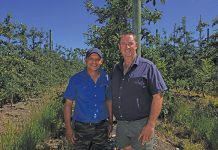A major boost to farmers, especially those exporting produce to offshore markets, was the expected weakening of the rand, according to Ernst Janovsky of Absa Agribusiness. He said the currency was forecast to weaken by between 3% and 5% against the dollar over the next couple of years, making SA products, priced in dollars, euros or pounds cheaper.
A weakening exchange rate would “drive interest rates higher”, making capital more expensive, Janovsky said. In the international trade arena, Europe’s economy was expected to continue its anaemic growth while China’s output expansion was losing steam, according to Lindie Stroebel, manager of agri business intelligence at Agbiz.
“That is not something we want,” she said. Farming debt was flattening out as access to funding became tighter, Dr John Purchase, CEO of Agbiz, said. In the meantime, SA farmers continued to be net exporters of food. This, he added, might be one of the reasons that the government was looking “benevolently” at the industry.
SA food exports to Africa had doubled in 2013, driven mainly by apple shipments, Purchase said, adding that the rest of the continent would continue to drive most of SA’s agricultural exports.











